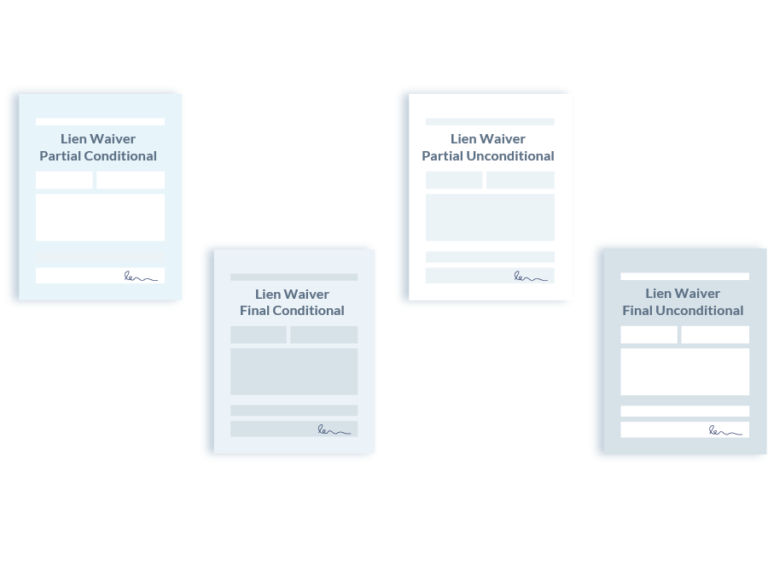What is a Lien Waiver?
- Waiver Resources
- Top Links
Lien Waiver FAQs
These docs can be confusing, but they don't need to be. Find answers to some frequently asked questions below.
Map of waiver requirements
The waiver rules, forms, and specifics are different in every state. This map gives you an overview of some lien waiver requirements across the country.
Send or request a free waiver
Make sending or collecting your next waiver super easy. Do it free with Levelset, and access all of our free forms.

Watch videos about lien waivers
Enjoy a series of videos that try to explain lien waivers as simply as possible so you can exchange waivers confidently.

Simplify Lien Waivers with Levelset
Learn how to make sending, collecting, and tracking lien waivers easy and stress-free with Levelset's Waiver Automation.
Lien waivers are documents exchanged at the time of payment in the construction industry. Typically, the party making payment requires the party receiving payment to sign a lien waiver. These documents are important to construction lenders, general contractors, subcontractors, suppliers, and others.
In some places, they are also called lien releases. For example, California calls the waiver form a “Lien Waiver and Release.” But don’t get them mixed up: there’s a difference between a lien waiver and a lien release.
Waivers act like a “receipt” of payment. It is evident that a job participant has received payment, and therefore, will not file a mechanics lien on the job for non-payment. The person or company signing is “waiving” any future lien rights in the project.
Types of lien waivers
Across the United States, there are generally four types of waivers:
- Conditional Waiver on Final Payment
- Conditional Waiver on Progress Payment
- Unconditional Waiver on Final Payment
- Unconditional Waiver on Progress Payment
It’s important to understand the differences and to use the right one for your payment situation. Learn more about these 4 different lien waivers in our Ultimate Guide to Lien Waivers. You can also learn more about these 4 types of waivers in this short video.
Receiving lien waivers
Those making payments on a job desire signed waivers to protect against mechanics lien being filed against the project. Since a mechanics lien filing presents financial and contractual problems on a construction project, general contractors and property owners benefit from withholding payment until certain that a lien will not be filed.
Therefore, you should always request a lien waiver whenever making payment to a contractor, subcontractor, or supplier on a job. Requesting a waiver can be quite simple, even though tracking and managing all of your requests is an administrative pain. You can do it orally, in-person, by email, or electronically. You can electronically request a lien waiver right now—for free—by clicking here.
Sending lien waivers
Those receiving payment on a job may need to review and sign a waiver before getting paid. Reading, managing, and responding to requests is an administrative step that slows down the payment process. The exchange also presents legal and financial risks, as it’s unfortunately common to sign over-broad or dangerously vague lien waivers that waive more rights than bargained for (Read: Should I Sign That Lien Waiver!?).
Contractors & Suppliers can make payment go faster by getting very good and fast at executing and sending out lien waivers. You can electronically send a lien waiver right now – for free.
These documents are pervasive on construction jobs. They are exchanged millions and millions of times on jobs across the country every year. Some companies have departments of people dedicated to signing and shipping, or tracking and receiving, waivers. And for this reason — because these documents are so frequently exchanged — the document is usually prepared, signed, and passed along without much fanfare or analysis. But the laws and cases can cause complications. A variety of factors can really impact everyone’s rights on the job or can invalidate the waiver altogether.


